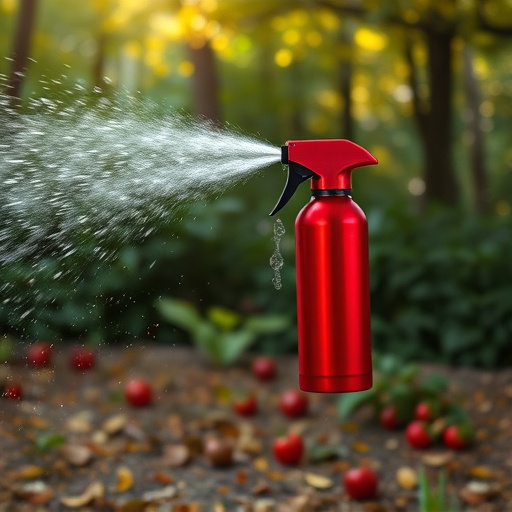Tactical inflammatory spray (pepper spray) uses capsaicin to temporarily incapacitate targets by irritating eyes, nose, and respiratory systems for 3-15 minutes or up to an hour, depending on concentration and individual sensitivity. Effective deployment requires understanding legal parameters and using it responsibly as a last resort against imminent threats.
In today’s dynamic security landscape, understanding tactical inflammatory spray defense systems is paramount. This article explores the multifaceted dynamics of these powerful tools, delving into the science behind pepper spray’s efficacy and duration. We’ll dissect legal considerations and usage timelines, providing insights into how long pepper spray effects last. By navigating these critical aspects, professionals can ensure optimal protection in diverse scenarios.
- Understanding Tactical Inflammatory Spray Dynamics
- The Science Behind Pepper Spray's Efficacy Duration
- Legal Considerations and Pepper Spray Usage Timeframe
Understanding Tactical Inflammatory Spray Dynamics
Tactical inflammatory spray, often referred to as pepper spray, is a powerful non-lethal force multiplier designed for law enforcement and military applications. Understanding its dynamics involves grasping how it affects the human body. When deployed, the spray creates a cloud of capsaicin, the active ingredient responsible for the burning sensation associated with chili peppers. This irritates the eyes, nose, and respiratory system, temporarily disabling the target.
The duration of pepper spray’s effects varies based on factors like concentration, weather conditions, and individual sensitivity. Typically, the intense irritation lasts between 3 to 15 minutes, during which time the targeted individual may experience tears, coughing, difficulty breathing, and pain. While it doesn’t cause permanent damage, the experience can be debilitative, providing crucial time for responding officers or allowing a subject to be safely restrained.
The Science Behind Pepper Spray's Efficacy Duration
The effectiveness of tactical inflammatory spray, commonly known as pepper spray, lies in its ability to disable an opponent temporarily through targeted irritation and pain. The active ingredient, capsaicin, is derived from chili peppers and triggers a burning sensation when it comes into contact with mucous membranes. This irritant disrupts the body’s normal functioning, leading to symptoms like teary eyes, difficulty breathing, and temporary blindness—all crucial elements for gaining control in dangerous situations.
In terms of duration, pepper spray’s effects typically last between 20 minutes and an hour. The exact length depends on several factors, including the concentration of capsaicin, the amount sprayed, and the individual’s sensitivity. While it provides a valuable time window to escape or subdue an attacker, it’s important to note that resistance can develop over time as the body adjusts, requiring regular updates and adherence to usage guidelines for optimal protection.
Legal Considerations and Pepper Spray Usage Timeframe
The tactical inflammatory spray, commonly known as pepper spray, is a powerful non-lethal defense tool. However, its use comes with significant legal considerations. Law enforcement and private citizens must understand the legal boundaries surrounding pepper spray deployment to ensure compliance with local regulations. The duration of effects from pepper spray varies, but generally, the impact can last between 20 minutes to an hour. This timeframe is crucial as it dictates the permissible usage period, especially in self-defense scenarios.
Knowing how long pepper spray effects last is essential for users to make informed decisions and also for legal purposes. Excessive or unauthorized use can lead to severe consequences, including potential criminal charges. Therefore, individuals trained in tactical defense should be well-versed in local laws and the responsible application of such devices, ensuring they are used only as a last resort when facing an imminent threat.
Tactical inflammatory spray, or pepper spray, serves as a powerful personal defense tool. By understanding its dynamics, science, and legal context, users can make informed decisions regarding its deployment. Knowing how long pepper spray effects last is crucial for self-protection and strategic planning in various situations. This knowledge, coupled with awareness of local regulations, enables individuals to protect themselves effectively while navigating the complexities of using this type of defense system.
